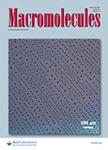版权所有:内蒙古大学图书馆 技术提供:维普资讯• 智图
内蒙古自治区呼和浩特市赛罕区大学西街235号 邮编: 010021

作者机构:Department of Organic and Polymeric Materials Tokyo Institute of Technology 2-12-1 Ookayama Meguro-ku Tokyo 152-8552 Japan Department of Chemical Engineering National Taiwan University Taipei 106 Taiwan Institute of Polymer Science and Engineering National Taiwan University Taipei 106 Taiwan
出 版 物:《Macromolecules》 (Macromolecules)
年 卷 期:2009年第42卷第13期
页 面:4456-4463页
核心收录:
学科分类:0808[工学-电气工程] 081704[工学-应用化学] 0809[工学-电子科学与技术(可授工学、理学学位)] 07[理学] 08[工学] 070203[理学-原子与分子物理] 070303[理学-有机化学] 0817[工学-化学工程与技术] 0703[理学-化学] 0714[理学-统计学(可授理学、经济学学位)] 0701[理学-数学] 0702[理学-物理学] 0812[工学-计算机科学与技术(可授工学、理学学位)]
主 题:Sulfur
摘 要:The synthesis and memory device characteristics of two new poly [2,7-bis(phenylenesulfanyl) thianthrene-hexafluoroisopropylidenediphthalimide] (APTT-6FDA) and poly[4,4 -thiobis(p-phenylenesulfanyl)- hexafluoroisopropylidenediphthalimide] (3SDA-6FDA) are reported. The sulfur-containing APTT and 3SDA as electron donor were designed to enhance electron-donating and charge-transporting characteristics for the device application. The optical band gaps of APTT-6FDA and 3SDA-6FDA estimated from the absorption edges were 3.51 and 3.46 eV, which probably resulted from the difference in the structural coplanarity. The estimated energy levels (HOMO, LUMO) of APTT-6FDA and 3SDA-6FDA were (-5.55, -2.04) and (-5.71, -2.25) eV, respectively. The memory device with the configuration of ITO/polymers/Al showed nonvolatile memory characteristics with the low turn-on threshold voltages of 1.5 V(APTT-6FDA) and 2.5 V(3SDA-6FDA), probably resulting from the difference in the HOMO energy level. Also, the memory devices could be repeatedly written, read, and erased. The on/off current ratios of the devices were all around 104 in ambient atmosphere. The relatively higher dipole moments of the sulfur-containing polyimides compared to the triphenylamine-based polyimide provided a stable CT complex for the flash memory device. The above electronic properties were further confirmed by the density functional theory (DFT) method at the B3LYP level with the 6-31G(d) basis set. The present study suggested that the new sulfur-containing polyimides would have potential applications for memory devices. © 2009 American Chemical Society.